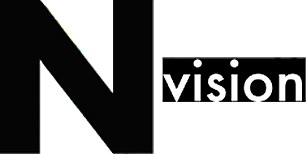
4.1.2
ABSTRACT
Where the way illustration appears in its reproduced state has a meaningful impact on all forms of illustration, this paper presents the hypothesis that for editorial illustration, framed by the material and ideological settings of both the singular story and its wider publication, the quality of this material signification is fundamental. Through the exploration of the principal technological developments of the editorial illustration, wood engraving, halftone printing process, digital printing and online publishing this paper traces the signifying impact of media transformations on illustration. It shows that story and illustration are not necessarily distinguished through the way they are expressed within a medium, but through the way these are used and interrelate. It exposes editorial illustration as a specific dialogical mode of communication, based on a particular underlying continuity, defined by material, intertextual and social constructions, rather than appearance.
Keywords: editorial illustration, material signification, media transformation, technological impact, reproduction processes, expression.
INTRODUCTION
As no other visual medium, editorial illustration, the illustration of articles and covers of newspapers and magazines, is shaped by the publishing context in which it is reproduced. Even though individual methods of creation can offer a wide range of expression, those too are framed and determined by the reproduction technologies available and their material culture. Where illustration appears in its reproduced state is of importance to all forms of illustration. It is my hypothesis that, for editorial illustration, which is framed by the material and ideological settings of both the singular story and its wider publication, the quality of this material signification is fundamental to its signifying ability.
In order to explore how reproduction technologies and cultures impact on the material signification of illustration, I will trace the media transformations between three major image reproduction technologies in news publishing, using Katherine Hayles notion of intermediation (My Mother Was a Computer 30). After a short description of the particular qualities of editorial illustration, and an introduction to particular notions of transformation, I will explore three stages in the development of editorial illustration. I will start with the introduction of wood engraving, which, in the mid-19th century, made illustration a ubiquitous mode of representation within newspaper publishing. It was followed by the halftone printing process, which was introduced around 1880. This allowed direct translation of an original artwork and thus enabled the photographic image as part of news-printing culture. Next I will point to digital print reproduction, at the end of the 20th century, which drastically changed printing processes and technologies. Automated computer processes not only vastly improved the quality and reach of printed publications but also gave access to new and enhanced abilities to visual expression in design and illustration. Finally I will discuss online1 technologies, developed around the same time, which extended these digital processes with a network of globally connected computers and multi media expression. Commonly known as new media2, online technologies have not only transformed the processes, but the entire structure of publishing and within the publication, it has redefined the way the story and its illustration are revealed. In new media publications, the distinction between these two modes of communication, between story and illustration is no longer necessarily through pre-defined media difference, but through expression of modality and the way story and illustration interact.
…



